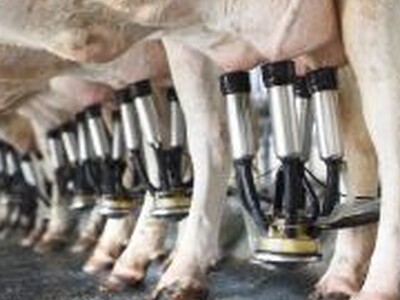More on Mastitis
On July 5, we told you about some Oregon State University researchers who developed a blood test to identify dairy cows who are susceptible to bovine clinical mastitis. Now we learn that visible abnormalities in milk are often the first sign of mastitis in dairy cows. However, just showing some symptoms may not necessarily mean a long-term treatment plan is necessary. Dr. Curt Vliestra (VLEET-strah), Professional Services Veteraian at Boehringer-Ingelheim, talks about some of the things that happen to a cow's body when she first becomes infected with mastitis. "There are different ways that a cow will respond depending on the pathogen that is involved and also the severity of that pathogen. It's actually possible for a subclinical infection to occur and the only way you are going to detect it is by doing a routine culture. There may be an elevated somatic cell count but the milk may appear normal. There may be no inflammation in the cow look perfectly healthy. You can see abnormal milk which is typically associated with a mild infection. Progressing beyond that you will see some inflammation of the utter which may last 3 to 5 days depending on the severity and type of infection.There are rare cases in which a cow can appear clinically sick and needs immediate attention because of severe infection. If a dairy producer discovers an infection, the first thing Vliestra says is consult a protocol that's hopefully already been put in place by their veterinarian


















